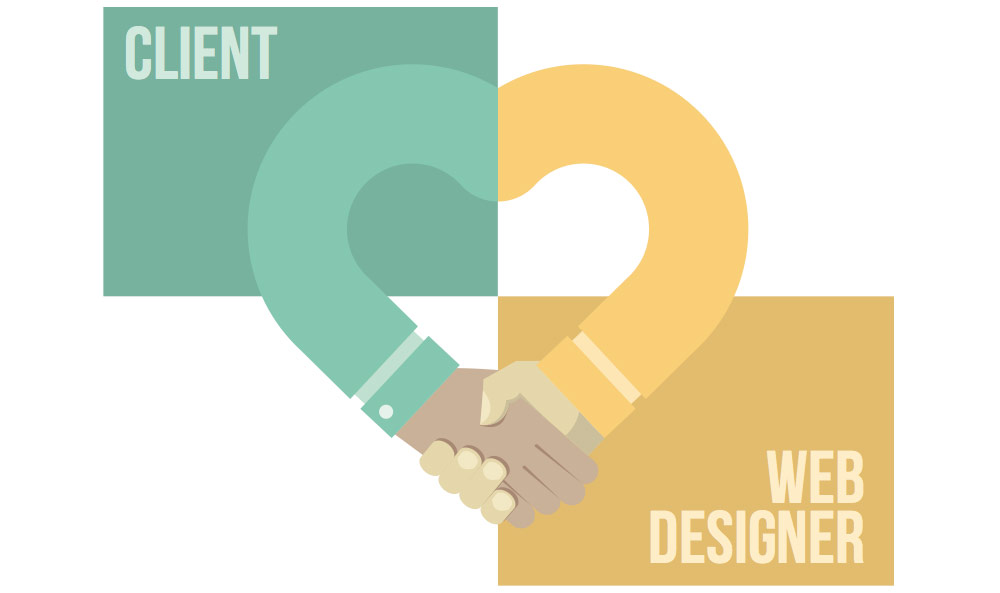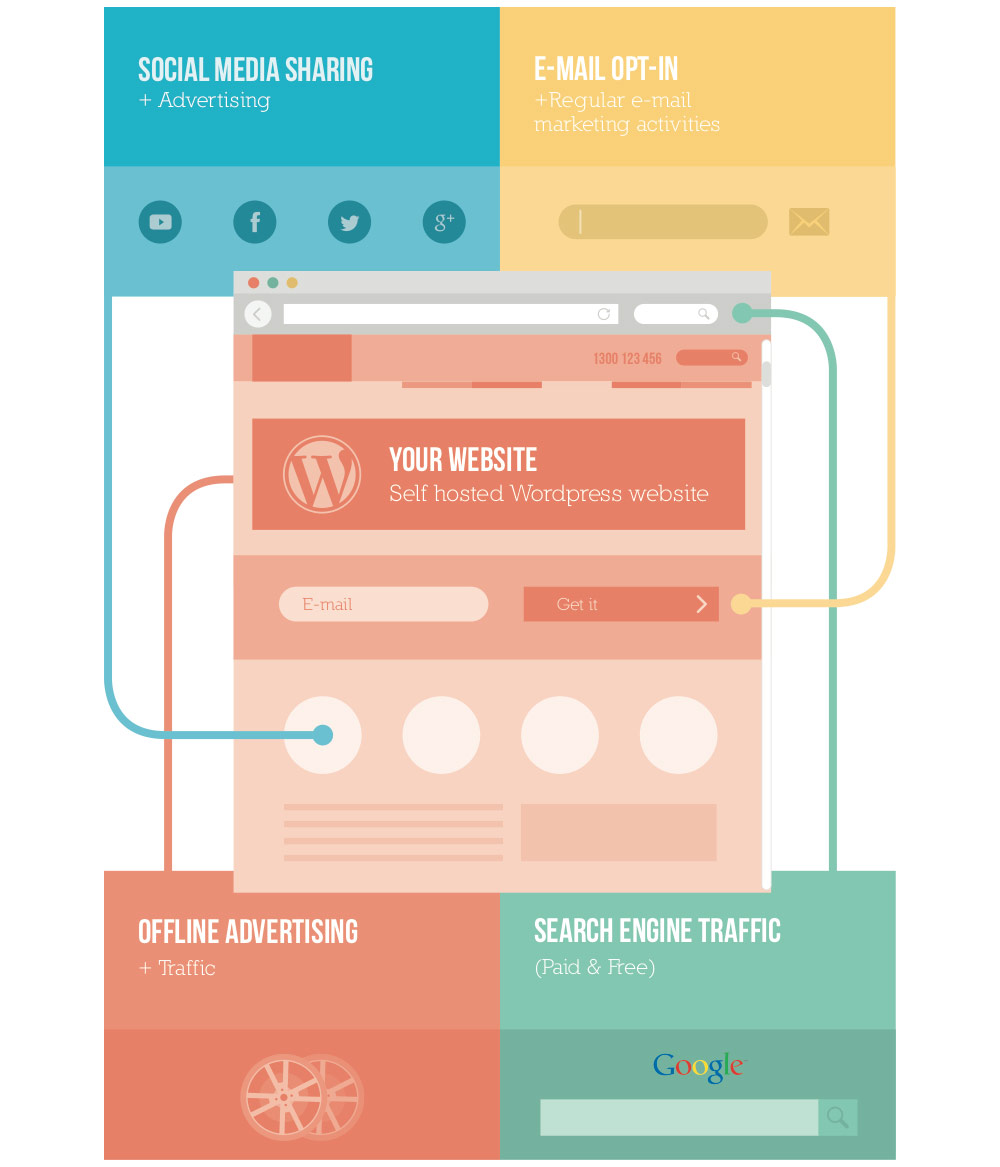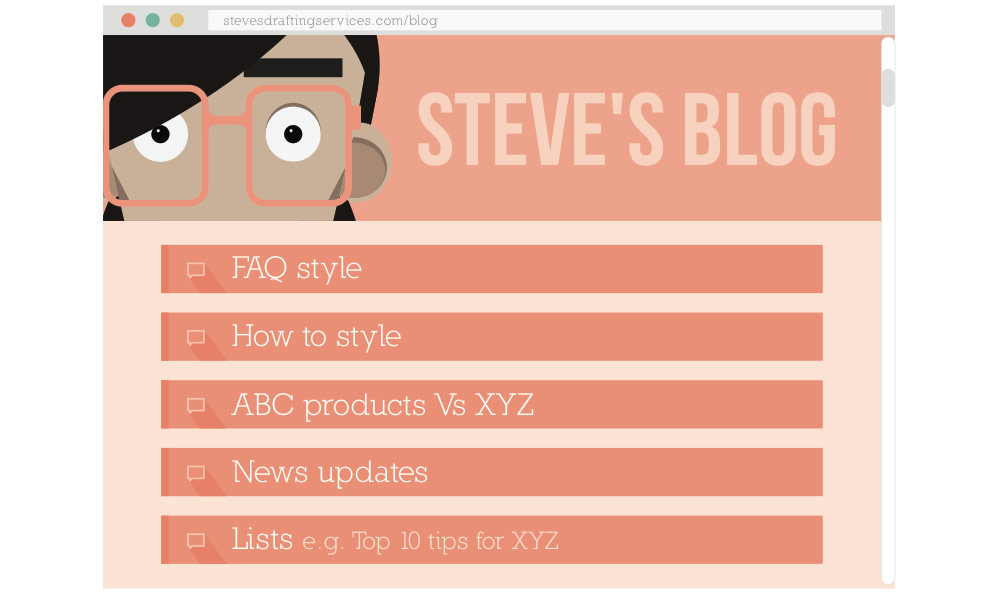Mistakes. We have all made them. It’s part of being human.
Mistakes in business are actually very helpful as there is no better way of learning than through the pain of your own situation.
But if you can learn from other peoples mistakes, you can fast track your progress.
And when it comes to websites, this can be a big investment in both time and money. You better get it right, the first time.
So after 10 years of building websites, we have seen lots of frustrated business owners ask us to pick up the pieces to get their website project back on track.
Here are 7 mistakes to avoid when selecting a website designer:
1. Selecting the wrong partner

Seems pretty obvious really!
But when starting out, you never know how a relationship will pan out. Both parties can go into this with the best intentions but if there are misaligned expectations, invariably someone will be let down.
Selecting a good web designer can be really difficult. However, knowing the right questions to ask can save you lots of heartache (and money) further down the line.
Working on the premise that you have decided to partner with a web designer to build your new website, how do you find a good provider?
In my opinion, the best type of introduction is via a referral. Ask your family, friends and extended network about the providers they have used and dig into the details on what was completed the results achieved.
The biggest measure of a good digital agency is their portfolio of work. Is there a consistent creative flair across all their work? Or do all their samples look the same? Ideally each of the examples should be handcrafted, unique and bespoke to each client’s brand and they should not have a templated feel.
The second most important factor is, are they practicing what they preach? Check their blog and social media profiles to see how often they update their posts. This is a good indication of whether they are exercising market leadership with a foundation around education and sharing.
Finally, pick up the phone and test their support and communication skills. Can you easily get hold of someone to speak with or does it take them two days to return a phone call? Are they forthcoming with information and able to answer all your questions? Do you feel reassured that they understand your brief and requirements? Communication in a friendly and comprehensible manner will be key to your success because if you don’t understand what’s happening you’ll struggle to make the right decisions. A good, reliable team that communicates in plain English does exist – so keep on looking.
Action points:
- Ask family & friends for a referral to their website designer
- Pick up the phone and talk to their team
- Write a great brief (remember crap in, crap out!)
- Ask lots of questions
- Remember, you do get what you pay for. A well designed site will pay for itself many times over.
Additional resources:
How to write a clear website brief
50 questions you can ask you website designer before building a site
2. Using the wrong content management system (CMS) platform

With so many platforms and different opinions it can be difficult to source the best tool for the job.
Let’s just start out by defining what a ‘content management system’ (CMS) is. To put it simply it is a bit of software that allows you to publish, modify or edit content on your website. You can manage text, photos, graphics and videos, all from a secure administrator interface on your web browser. It is nice and simple for the average Joe (after a little bit of training) to maintain the content on their site. An example of an update you might want to do is a new blog post, changing a phone number or adding a new team member to your website – general day to day maintenance tasks that you don’t want to pay a supplier to do.
Get your choice of CMS right, the first time.
I am assuming you only want to pay once to have this website built? Makes sense huh?
With so many platforms and different opinions it can be difficult to source the best tool for the job. And here lies the big fork in the road.
The road to the left – a ‘CLOSED’ system
On your left is unique ‘closed’ system that your local web design company has built. They have built it from scratch and the software is unique to them. Only they know how to operate it. So why do some companies choose to use these systems?
There are advantages of this approach such as it can be simple to use and security tends to be tighter. They’re often suited to very large companies who bring the updating expertise in house and like the enhanced security aspects. The disadvantage is that you are tied to that website designer forever. Yes, you heard me, forever. If they go out of business or things just aren’t working out, it is very difficult to pack your bags and leave. You can’t just bundle up the site and move it. It is stuck on their server. The site needs to be rebuilt, from scratch. “Ouch,” I hear you say.
The road to the right – an ‘OPEN’ system
On your right is an ‘open source’ content management system. It is used by millions of businesses around the world. It is free to download and use and can be housed by most hosting companies. You can bolt in ‘plugins’ to extend the features of your website. All its files are free to use, customise and enhance. It can be packaged up and moved around with little hassle. This gives flexibility if a relationship with a web designer ever deteriorates.
There are many open source platforms available. The world’s most commonly used platform is called WordPress (https://www.wordpress.org).
This is our pick.
WordPress drives about 22% of all the websites on the internet. There are hundreds of thousands of web designers who use it as their primary tool of choice. Finding a web designer and developer to help with the ongoing support for your website is very easy. If you are technically minded and like to get your hands dirty you can even do the majority of the setup and configuration yourself. Utilising templates allows the majority of the behind the scenes heavy lifting to be done for you, whilst still allowing exciting creative input from your design crew.
Action points:
- Use a self hosted version of WordPress
- Don’t get caught in a ‘proprietary platform’ that you can’t break away from
Additional resources:
8 reasons why WordPress will rock your world
3. Not understanding the bigger picture web strategy
You are sitting on a mountain of knowledge which needs to be shared with the world in the form of great quality content focused on your business or industry. Business owners need to understand that Google only wants great content. Based on this premise, we can formulate a strategy for success focused on market leadership.
So with this in mind, it is so much more than just building a website for your business.
Success will be founded on great content. No two web strategies are the same but common elements exist. Here is a sample of what a typical small business ‘online footprint’ would look like.

- Self-hosted WordPress website
- Email database opt-in and regular email marketing activities
- Social media sharing and advertising
- Search engine traffic (paid and free)
- Offline advertising and traffic
If you aren’t having these discussions about the bigger picture web strategy with your proposed web designer, you should.
The success of your project depends on it. Remember, it is only about the website.
Action Points:
- Get a good foundation on what your web strategy is
- Don’t try to do it all at once. Nail your website first.
- Chip away at the different components over time (consistency and implemenation is the key)
Additional resources:
Ideas for creating great website content
4. Poor hosting
Website hosting is like your bit of ‘real estate’ on the internet. It works by storing the files (such as code, images, PDFs and scripts) that make up your website on a fast server that is connected to the internet. When a visitor types your domain name into their browser’s address bar, your server is located, and files are sent back to the browser’s computer. The server space where everything is stored is referred to as ‘website hosting’.
Hosting ranges dramatically in terms of cost and service. Generally the cost of hosting has come down significantly over the years. It is very easy to purchase a ‘shared hosting account’ (meaning you share a server with a few hundred other users) for a few dollars per month. Stay away from these! Like anything in life, you get what you pay for and hosting is no different. These shared hosting plans tend to crash often and are notoriously slow and customer service poor. Your website load speed is measured by Google and is important to ranking so you want to ensure your site loads fast.
An important part of hosting a WordPress website is ensuring that the underlying core software and plugins are always up to date and secure. Due to the fact that WordPress is open source it is easy for hackers to look for vulnerabilities and exploit these. Their motivation is typically to inject malicious code and links into your website to gain advantage in Google. The last thing you want is a bunch of Viagra links on your website!
WordPress is always working on new security patches and features. It is imperative that this maintenance happens otherwise you are leaving your site exposed. A good quality host or web designer will ensure that your WordPress is kept up to date and secure as part of their service.
Our recommendation is to go with dedicated WordPress hosting solution such as WP Engine.
Due to the popularity of WordPress as a platform, there are hosting companies that specialise purely in hosting just WordPress websites. They are typically very proactive about security and by default they take care of all WordPress software upgrades. Their speed and reliability tend to be a lot better as they look after all the technical aspects that enable delivery of your website as fast as possible. For added peace of mind, these services take daily backups of your website so you can roll back and restore with one click at any point in time. If your website is ever hacked, they will fix it as part of the service.
In addition, a feature called a CDN (Content Delivery Network) will be built into the platform. This means that a copy of your website exists on hundreds of servers around the world. The website that is geographically closest to the visitor accessing your site will load automatically, speeding up load time. The end result is your site loads super fast!
Typically a service like this does cost more but when you factor in the added value of security, maintenance, backups and support it is the logical choice.
And it better be fast.
A faster website is not only better for your ranking in Google, it is great for your users. Studies have shown that a delay of even one second can affect the user’s flow and train of thought. After three seconds the user will abandon your website all together.
Action points:
- Understand where your site will be hosted
- Always have your own logins and access to the website
- Don’t scrimp on hosting fees.
Additional resources:
Are you making this mistake with your website hosting?
5. Amateur Design
More often than not a website is a person’s first interaction with a business. Scary huh!
From that very first encounter of going to Google, typing in a search phrase and clicking on your website you are on display. People form an opinion on the signals that a website conveys. The design of your site provokes an emotional response. It stirs a customer’s desire. The impact you make better be good otherwise you may have blown your chance.
Design is not just about the look and feel of the website, rather the way it makes you feel and think. This needs to be balanced against usability of the website. After all the end user is in 100% control of their mouse and if they can’t find what they need, they will leave.
Design for conversion
A conversion is when someone picks up the phone, fills out a form or makes a purchase from your website. It is far easier to double conversions (phone calls / opt-ins / email enquiries) on your website than it is to double your traffic (the number of people visiting your website).
The ultimate purpose of a website is to display information and elicit a response. If someone doesn’t find what they are looking for within a narrow window of time, they leave. By focusing on what is important to the prospect by making their way through the website as pain free as possible you will have a dramatic impact on conversions. Stay focused on the end user and why they are using your website. Simple examples are things like the placement of a phone number at the top of every page or the location of a search bar. With so much competition and so many websites to choose from we are seeing less tolerant and more distracted users.
Having the end user in mind
Be very clear about who the end user is. What are their goals when arriving at your website? Understanding their characteristics, behaviours and habits will ensure the new design is consistent with what they want to achieve.
Action points:
- Research the leaders in your industry. What are the common design characteristics they use?
- Get up to date on current trends
- Listen to your web designer, they are the experts in this field
Additional resources:
6. Not making your site mobile friendly

Your new site needs to look awesome on a mobile device such as a smartphone or tablet.
Over a third of all web traffic comes from these devices (and it growing exponentially).
The ultimate goal of a mobile site is to provide a better user experience and have a fast loading site while your visitors are out and about.
Responsive design reformats your website ‘on the fly’ to give the best viewing experience. Common characteristics of a website built in this manner are large fonts, easy to use navigation and not having to pinch and zoom.
The website adapts or ‘responds’ to the type of device which is accessing it. This means you only build one website that looks great and adapts gracefully to every type of device. From a large desktop monitor, through to a medium tablet-sized screen and then down to a small smartphone screen.
In technical terms, the website uses a script on your site to figure out the size of the screen. It then resizes the interface to correctly fit on the screen. The beauty of this is you build and maintain one great looking website that looks fantastic on thousands of different devices. There is no need for a separate mobile website.
Action points:
- Ensure your new project covers off on mobile design
- Test your new site to ensure it works on all platforms & devices
Additional resources:
Check how your site looks on a mobile device using this tool
7. No on-going plan for content & maintenance

Your website should never be set and forget. Cobwebs will appear. And Google will know.
The stark reality is that regular content will make or break your site. This will be the number 1 contributor to success.
The really annoying thing about this is that it takes work. Lots, and lots of consistent, ongoing work. Remember, this is a marathon race and launch the new site is just the start.
You should be having the following discussions with your website designer in the early planning stages:
- Can you help with an ongoing content plan?
- Will you be there to provide ongoing support and assistance in some sort of “continuous improvement plan”?
- Are you practicing what you preach? Can you show me examples of the regular content you are creating on your blog?
Ongoing support usually comes in the shape of a monthly retainer which gives the client a safety net to call upon when they need help with the site.
Action points:
- Understand that regular content will need to be added to your website
- Have a content plan
- Ensure there is a monthly support agreement in place





